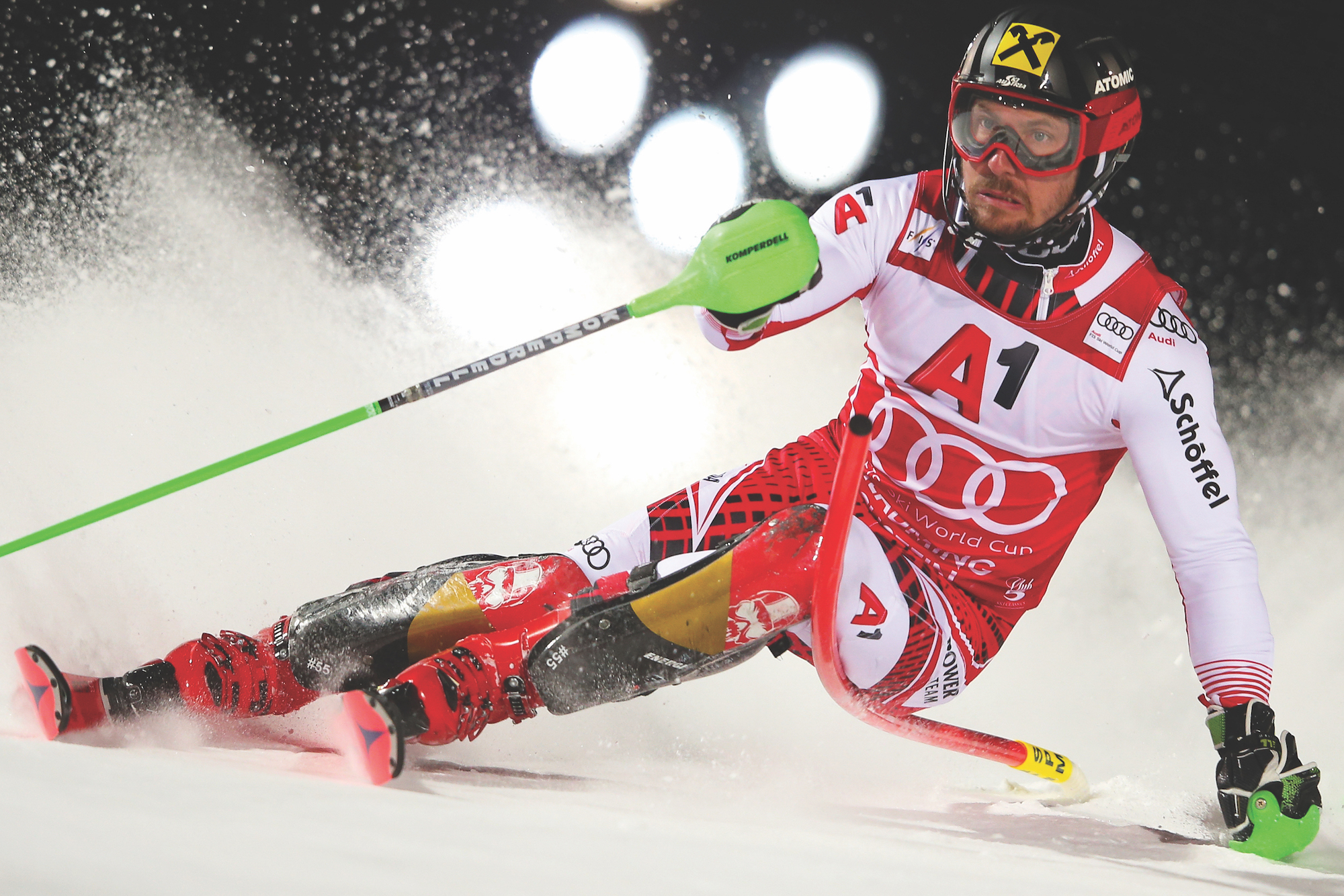Speed Freaks – Robo-Racer



If there was a factory that made World Cup ski racers, imagine being able to strip down the world’s best racer for parts. Taking the attributes that set them aside from the others, psychologically, physically and technically, to create the definitive racing machine.
I spent many years of my life training and racing with someone who had a very similar genetic code to me: my brother Martin, so I understand how subtle differences can lead to big changes in performance. Martin’s strengths were his dedication to training, his fast-twitch leg strength and his edge control in tight turns, whereas I was never short of aggression, had great balance and was a good glider. Combined together we could have made quite a racer, but what if you could build from the very best, what would take from who and why?
Let’s look at the psychological side first, as it is often the deciding factor in elite level sport. From Marcel Hirscher I would take his dedication to training; they say practice makes perfect, but it’s not true, only perfect practice achieves perfection, and that is what Hirscher always strived towards.
From Lindsey Vonn I’d take her ‘never say die’ attitude; no one has ever fought their way back to the top as many times Vonn.
Bode Miller’s ability to think outside the box was remarkable. The best example of this was at the World Championships Downhill in Bormio 2005. At the time the race start order was the top 30 from the last training run, in reverse. Bode wanted to start early, so in his training run, he opened the wand with his pole and counted to three before starting. He timed it to perfection, the next day he won from start number 3.
I’d choose Didier Cuche for the raw aggression he was able to muster. Hermann Maier, for his intimidation of the opposition; snubbed by the Austrian ski team as a junior, he took particular delight in beating his own team mates.
Intelligence is not a quality often associated with ski racers, but Aksel Lund Svindal was super smart, and his risk management enabled him to nurse a disintegrating knee to a 2018 Olympic Gold.
Finally, we can’t forget our own Dave Ryding for his sheer bloody-mindedness, the years he spent working his way to the top from a dry slope in Pendle.
In recent years the physical conditioning of all ski racers has dramatically improved thanks to the help of the sports scientists, but there were athletes that were ahead of their time in this department.
Franz Klammer was fantastically strong, which suited his aggressive style of skiing. Ingemar Stenmark pioneered the use of unicycles and balance ropes, and is still to this day, at 64, in great shape. Hermann Maier, was a massive cycling fan – he always used a stationary bike for post-race recovery, and was once invited to open the Prologue of the Tour de France.
Anja Paerson changed the game of women’s skiing in terms of power and strength; I once saw her squatting more than twice her body weight the evening before a race.
Of the current crop of athletes, Alice Robinson is incredibly strong from that Paerson mould, and on the Men’s side Aleksander Aamodt Kilde is revered as one of the fittest and strongest on the tour.
Technically it is hard to compare across the generations, as changes in ski design lead to changes in technical skills, however the basics of ski racing hold true. In Downhill the ability to stand loose and let the skis carve naturally through the turn was a trait that both Franz Klammer and Bode Miller shared, and of the current crop, Dominik Paris is the master of this skill.
Another DH skill is the ability to feel the skis gently onto an edge at the start of the turn, something that Lasse Kjus mastered, as does the current Downhill champion, Beat Feuz.
When it comes to taking air, no one before, or after him, has matched Daron Rahlves for the art of flight. In Slalom, Henrik Kristoffersen is superb at skiing the round line, creating grip and pressure at the top of the turn to generate awesome foot speed. Ted Ligety was the first to generate extreme hip angles – with phenomenal upper-body separation, he was unbeatable for many seasons and gained the nickname Mr GS.
Finally, when it comes to technical skills, Mikaela Shiffrin scores on all of the above, she doesn’t just do one thing well, she does everything well.